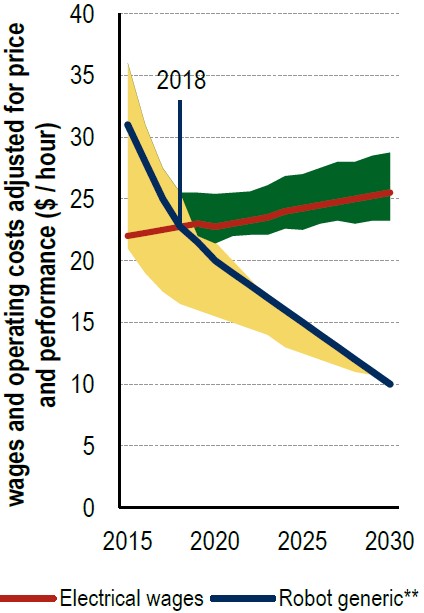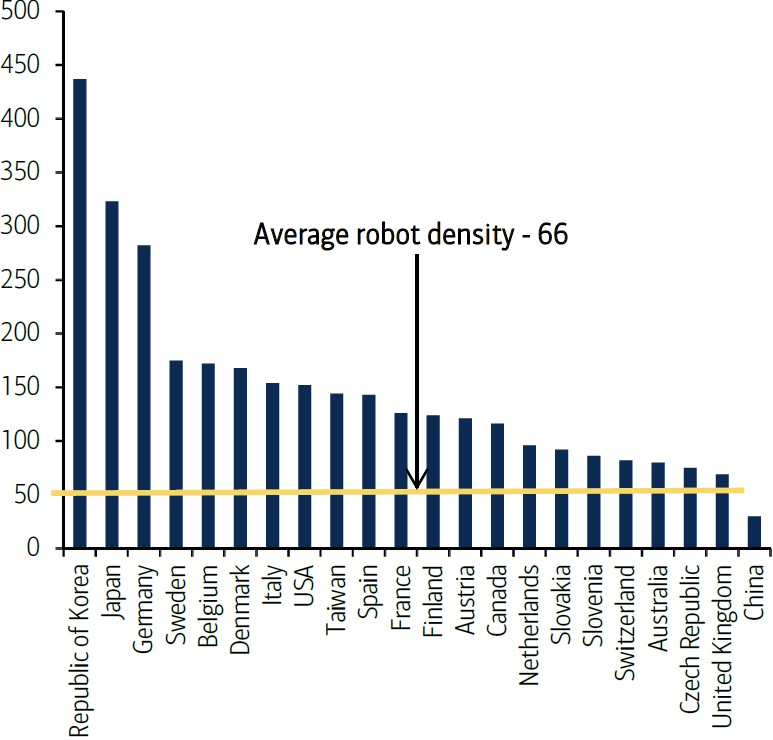By AbsoluteReturnPartners. Originally published at ValueWalk.
The evolving social and digital media platforms and highly innovative and relevant payment capabilities are causing seismic changes in consumer behavior and creating equally disruptive opportunities for business. – Howard Schultz
As regular readers of the Absolute Return Letter will know, we run a list of structural mega-trends which will form the world as we know it for many years to come – and that list drives our investment strategy. A couple of weeks ago, we added Disruption to that list, taking the total number from six to seven.
Here’s The Case For An Upside Risk In The Global Economy
Now, what is disruption? Let me offer one definition, although there are many. Disrupters originate in low-end or new-market footholds. Disruption doesn’t happen overnight but is a process and, because disruption takes time, incumbents frequently overlook disrupters until it is too late. (Source: “What Is Disruptive Innovation?”, Harvard Business Review, December 2015).
The mantra “disrupt or be disrupted” can lead to erroneous business decisions. Incumbents do need to respond to disruption, but they should not overreact by dismantling a profitable business.
Some disruptive businesses succeed whereas others don’t. It is a misconception that entrants are disruptive by virtue of their success. Success is not built into the definition of disruption. Now, that is about how Harvard Business Review defines disruption, but there is more to the story than that.
The number of years to fully disrupt incumbents is falling precipitously (Exhibit 1). I remember the days of proudly showing my new Eastman Kodak to anybody who cared. I had just received my first ever monthly salary, most of which was spent on this fancy camera. Those were happy days, but suddenly disrupters took the fun away. My Kodak was no longer smart. It was hopelessly outdated, and I couldn’t convert to a digital camera quickly enough. Of course, digital cameras have since been disrupted by smartphones, but that is another story.
Kodak may have been one of the first victims of disruption, but is far from the only one. Think Netflix and what that company has done to Blockbuster, what iPhone has done to Blackberry, or the damage Amazon has done to retailers all over the world. And, now, Amazon has decided to enter the retail industry after years of disrupting other retailers.
Even worse (for the incumbents), Amazon is far from done yet. It has just entered the banking industry (engaging itself in corporate lending), and it has just acquired the streaming rights for 10 Thursday night NFL games. If the live sports model works for Amazon, it is only a question of time before it will outmuscle European broadcasters for the right to show live football (soccer) in Europe. I am not sure I want to be a Sky or BT shareholder when that happens.
Exhibit 1: The number of years to disrupt incumbent businesses.
Source: Arrowgrass Capital Partners LLP, May 2017.
Advanced robotics
In the following, I shall focus on only one of many disruptive innovations – advanced robotics. There are admittedly many other innovations I could write about, but I am sure you will appreciate not holding a 300-page long document in your hands right now.
Some disruptive innovations, such as renewable energy, get more media attention than can be justified from an impact point-of-view (Exhibit 2), but advanced robotics is not one of those. Robots will almost certainly have a massive impact on productivity, on economic growth, and therefore on life in general.

Source: “Disruptive technologies: Advances that will transform life, business, and the global economy”. McKinsey Global Institute, May 2013.
The market for advanced robotics is in reality four different markets – personal, commercial, industrial and military. The industrial segment is the largest, but the personal segment is expected to grow the fastest – 17-18% annually for many years to come (Exhibit 3).

Source: “Robot Revolution”. BofAML, November 2015.
The key driver – the cost advantage
The industry that has been penetrated the most by robots so far is the automotive industry, and it is not difficult to understand why that is. At the time of BofAML’s research into the topic (November 2015), a spot-welder working in the US automotive industry was paid about $25 per hour. A spot-welding robot could do the same job for about $8 per hour (all in), and the difference will only get bigger in the years to come (Exhibit 4).

*The cost is for a US spot-welding robot.
Source: “Robot Revolution”. BofAML, November 2015.
Other industries are not yet where the automotive industry is, but it is only a question of time. Take the electrical equipment industry, where the cost advantage is about to swing away from manual labour towards advanced robotics (Exhibit 5).

**An example of a generic robotics system is ABB’s IRB 2400
Source: “Robot Revolution”. BofAML, November 2015.
The furniture industry is further back in that chain. The cost disadvantage of using robots is still significant, but robots will almost certainly catch up eventually (Exhibit 6).

***Includes other wood products
Source: “Robot Revolution”. BofAML, November 2015.
The robots will take over
The world will change dramatically as a result of advanced robotics, but is it for the better or worse? BofAML’s research analysts argued in their report that robots will take over nearly 50% of all manufacturing jobs and shave $9 trillion off labour costs within a decade. I don’t know enough about robots to argue for or against those numbers and the suggested timeline of it all, but the trend is clear, and the driver is first mover advantage. Those countries that don’t embrace the new technology will simply be left behind, such are the advantages (Exhibit 7).

Source: “Robot Revolution”. BofAML, November 2015.
Developed economies have a massive advantage over China in this respect. China, because of the sheer number of people, cannot allow robots to replace hundreds
The post Are Robots Disruptive? … Or Could They Be The Saving Grace For Ageing Societies? appeared first on ValueWalk.
Sign up for ValueWalk’s free newsletter here.





